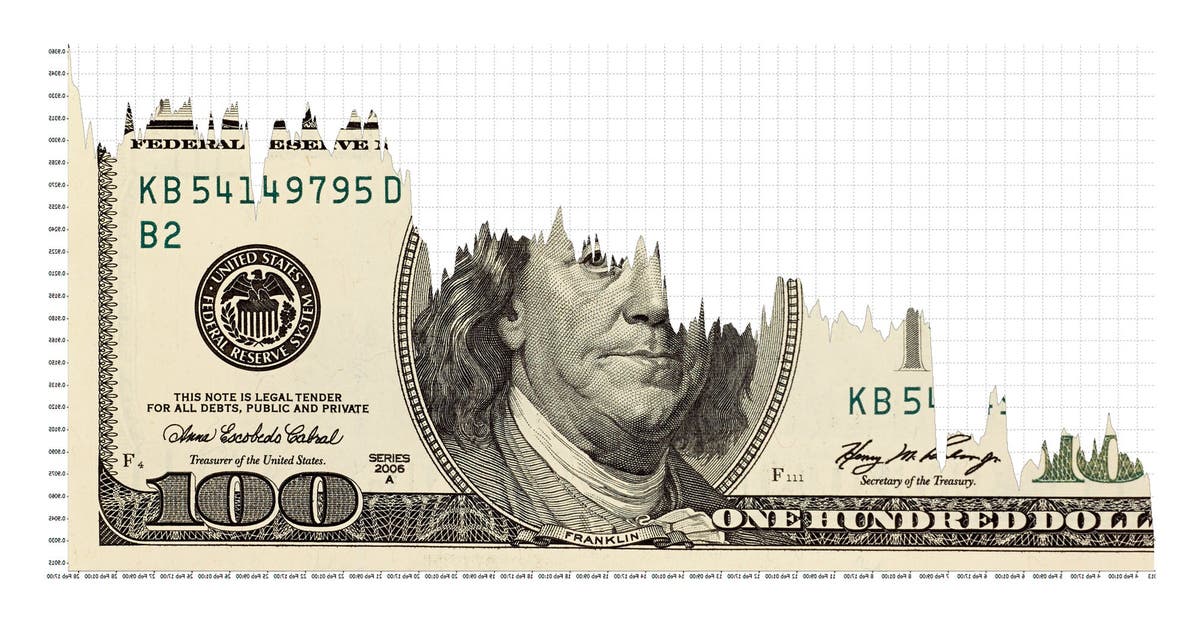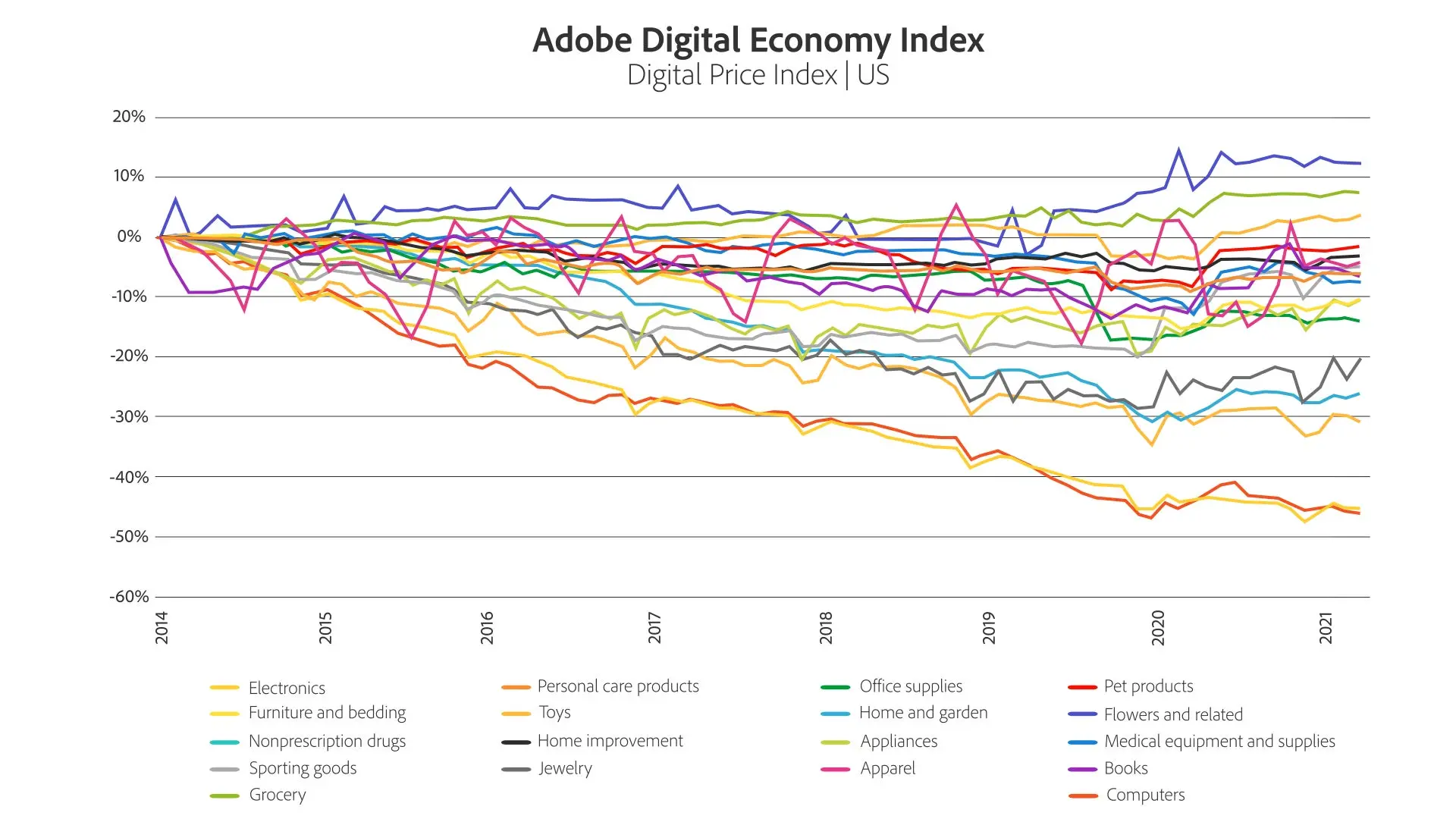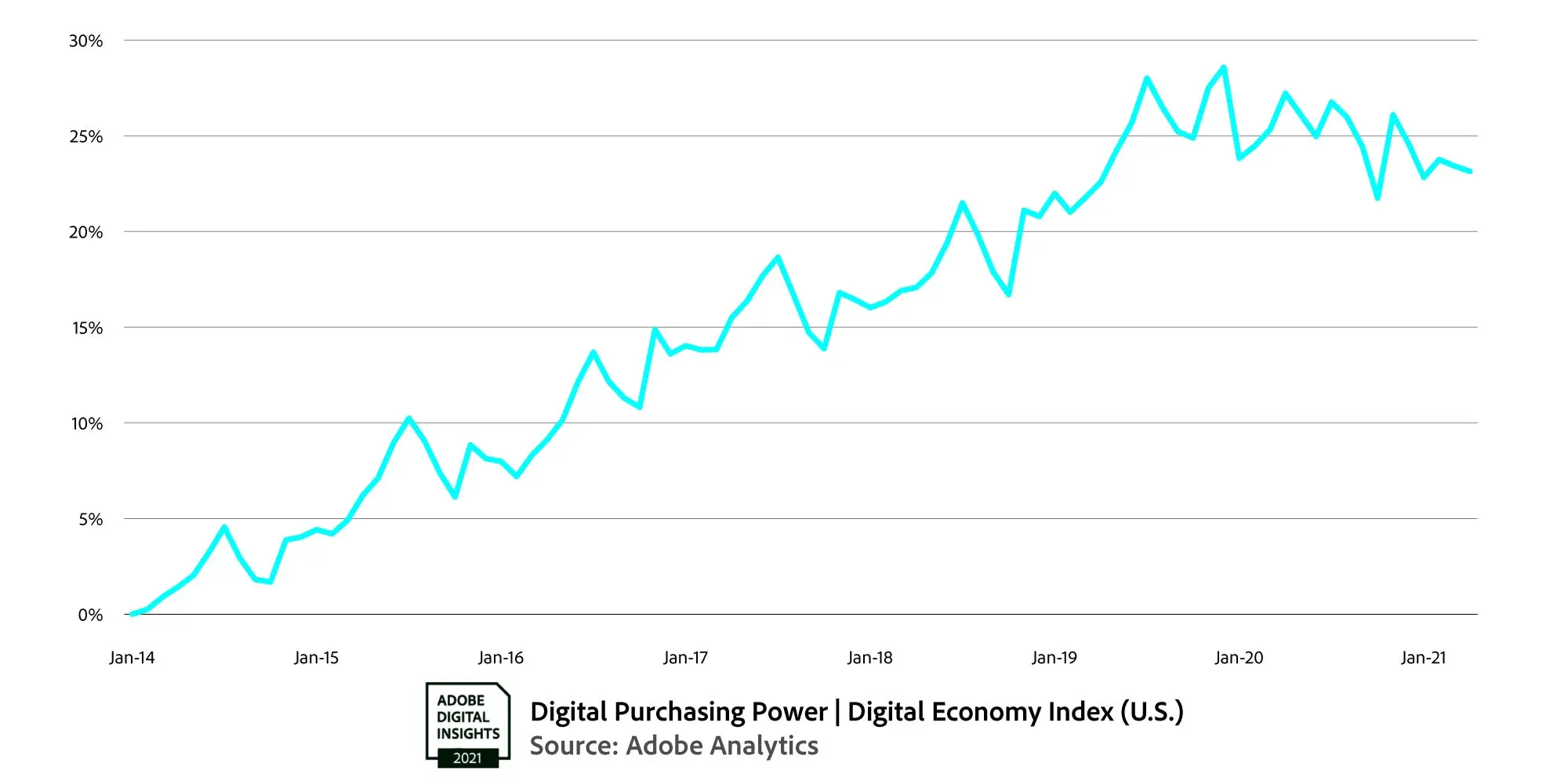Cheaper to buy it online? Not anymore.

Image source: Adobe Stock/ Kuleshin.
Outside of lecture halls and business publications, these days consumers rarely think about inflation. In fact, few could imagine the prices of everyday staples rising 10 percent a year, a reality for many during The Great Inflation era of the 1970s and early 1980s. At that time, inflation was conversation at family dinners, shaping how consumers felt about everything from buying a house to the impact of a pay raise.
Today, for many of the products we buy, consumers now expect prices to decrease. We’ve become accustomed to televisions and computers (and basically any technology product) getting cheaper and better equipped with more features with each new product or release, a trend that has been consequential for the overall economy. This long stretch of stable prices has meant lower interest rates for those financing a car or borrowing for college, as lenders expect their dollar to hold value while they wait to get it back.
Since 2014, Adobe has been tracking a key piece of this inflation story through our Digital Economy Index. Using aggregated and anonymized data from billions of transactions that flow through Adobe Analytics, we have a unique view into what people are buying online and how much they are paying for it. Over the years, we witnessed the role eCommerce played in stabilizing prices. With input from economists, we began to report pricing trends and provided a pulse on digital purchasing power (DPP).
“The Adobe Digital Economy Index was really the first to provide actual transactions prices on millions of products across many different categories and it brought us the first true trustable information of how inflation online behaves different than the regular Consumer Price Index.”
Austan Goolsbee, professor of Economics at the University of Chicago’s Booth School of Business, and the former Chair of the Council of Economic Advisers (President Obama)
During this time, across 18 categories, (computers, toys, appliances, sporting goods) consumers have enjoyed lower prices online. Periods of big sales (Black Friday) pushed prices down even further, buttressing moments when retailers introduced new products at higher prices. The predictability acted as a safety shield, bolstering the overall economy by giving consumers greater DPP. In fact, from 2014 to 2019, we aggregated prices across all tracked categories and found consumers were getting 25 cents more for every dollar they spent through eCommerce. If a consumer had $1,000 to spend on electronics, for example, they could get $250 more worth of goods online.
This all changed with the COVID-19 pandemic.
Even before restrictions and lockdowns took hold in March 2020, supply chains were constrained. The onset of COVID-19 closed factories in Asia and slowed down trans-Pacific shipping, producing less of what consumers wanted to buy and driving up prices. Adobe witnessed this as early as March, where a consistent downward trend of prices across electronics, computer, toys and even home furnishings came to a halt. Retailers also incurred new fulfillment costs, some of which became the shopper’s burden.
The pandemic also radically altered the types of goods people ordered online. With many confined to their homes, they turned to computers and smartphones to order everything from groceries to home furnishings. In the first month of the pandemic, the Adobe Digital Economy Index tracked an 87 percent increase for online orders of canned goods, as one example.
This changed eCommerce baskets dramatically. Once laden with electronics and gifts, shopping carts were now filled with everyday staples. As the digital economy grew, it was effectively absorbing new categories with more durable prices. While televisions and computers were historically cheaper and better every year, the same could not be said for a gallon of milk or a head of lettuce.
In just a few months, the pandemic reversed predictable trends in the digital economy. eCommerce growth was no longer correlated with a consistent drop in prices, and the discounting for products we were used to ordering online (electronics, computers) slowed down. This happened while the new categories we embraced online, from groceries to sporting goods, had products that would not be getting any cheaper.
So far in 2021, we aren’t seeing signs of these trends shifting. This past March, DPP dropped by 1.5 percent YoY as uncommon inflation took place online. The dip is notable, as DPP typically increases at a rate of 4 percent each year. This means that in the first year of the Pandemic (March 2020-March 2021), consumers lost 5.5 percent in potential purchasing power.
Across the millions of products we track, a few categories stand out when it comes to digital inflation. Prices for electronics and computers for instance, fell an average of 7.4 percent each year from 2015 to 2019, via Adobe’s data. From January 2021 through May 2021 however, online electronics prices fell just 1.1 percent, while those for computers were down only 2.3 percent. In more durable categories like groceries, prices were up 4.2 percent YoY (Jan 2020-Jan 2021) versus being down 6 percent YoY (Jan 2019-Jan 2020).
Moving forward, the arc of these trendlines will have greater implications, as the digital economy continues to expand and more daily activity moves online. In fact, the Adobe Digital Economy Index estimates that global eCommerce will hit $4.2 trillion in this year alone. A once-reliable check against overall inflation, which provided consumers greater purchasing power online, diminished during the pandemic and has yet to bounce back. If prices remain flat or even rise, the economy will need to move forward without eCommerce holding down prices. It would impact how we measure and understand overall inflation, thus impacting the value of assets and terms of debt. And in very short order, it may catapult inflation into dinner table conversations once again.
Source : Adobe










